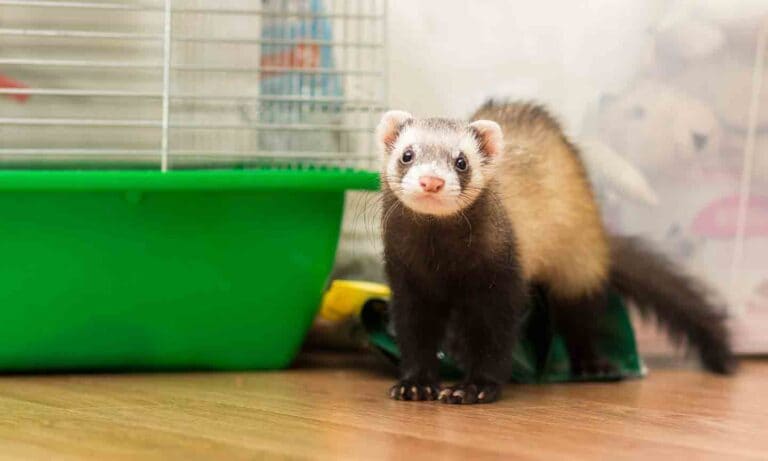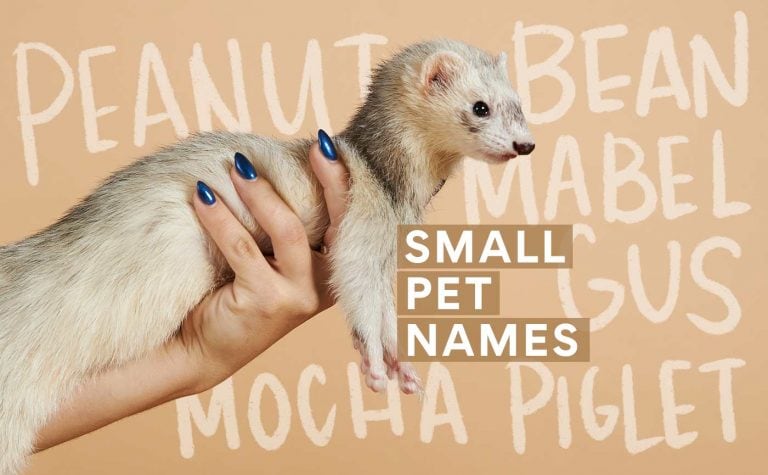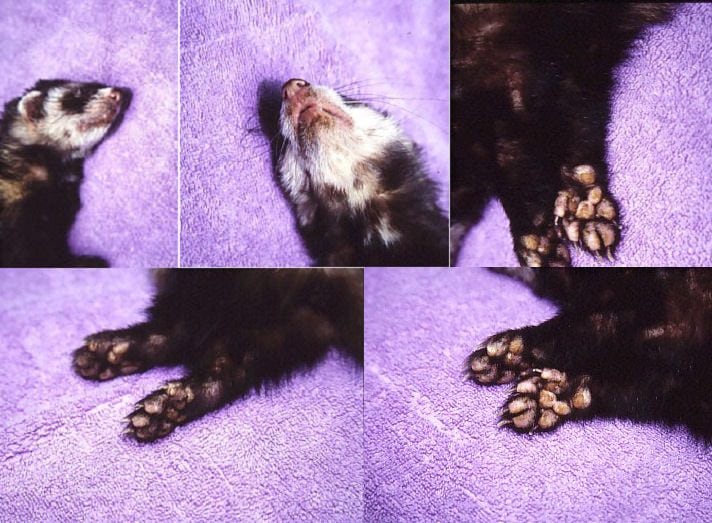There is a common misconception out there about the small, playful and sometimes mischievous ferret. Some people mistakenly call these sweet creatures rodents — and they’re not.
So why the frequent mistake?
”Probably because they look like rodents,” said Peter J. Brewer, DVM, chairman of the Zoological Association of America and a veterinarian for Southwick’s Zoo in Mendon, Massachusetts.
Comparing Ferrets And Rodents
Clearly, looks can be deceiving. While ferrets and rodents share a mammalian heritage, they are in completely different scientific orders.
“Ferrets are not rodents; they are members of the mustelid or weasel family,” said Vickie McKimmey, a ferret breeder since 1990, author of “Ferrets (Animal Planet Pet Care Library)” and current director for the American Ferret Association’s Shows and Special Events committee. “Mustelids belong to the large order Carnivora, which means they are actually more closely related to other members of Carnivora, like dogs, cats and bears, than to rats and mice.”
Other members in the weasel family include polecats, badgers, minks, martens, black-footed ferrets, wolverines and otters.
Rodents, on the other hand, are members of the single largest group of mammals, the order Rodentia, McKimmey said, which includes popular pets such as mice, rats, hamsters and guinea pigs.
“The Rodentia also includes beavers, muskrats, porcupines, woodchucks, chipmunks, squirrels, prairie dogs, marmots, chinchillas, voles, lemmings and many others,” she added.
One aspect that distinguishes rodents is their single pair of sharp incisors in the upper and lower jaws. These teeth keep growing and are used for protection or defense, burrowing and, of course, gnawing their primarily herbivorous (plant) diet. These mammals also have a few molars in the back of their mouths and mostly eat seeds and other plant materials, though some are omnivorous and eat a varied diet. (You’ll find modern food for ferrets wherever you find ferret supplies).
In comparison, ferrets have four types of teeth: incisors, canines, premolars and molars. These obligate carnivores (meat-eaters) need to eat often because of their short digestive tract and fast metabolism.
“Mustelids are fur-bearing carnivores that inhabit terrestrial and aquatic regions throughout the world, except Australia, Antarctica and most oceanic islands,” McKimmey said.
Looks Like A Ferret
Body shape is another important difference between ferrets and rodents. Most rodents have sturdy little bodies with short limbs and long tails. Ferrets share a sturdy body and short limbs, but their flexible frame is much longer. You might hear a ferret’s body type called whippet, which is a more slender body, or bulldog, which is a stockier frame.
Born with white fur, a litter of ferret kits can include up to 15 offspring, and their normal birth weight is 8 to 10 grams, Brewer said, adding that they wean pretty quickly at 6 to 8 weeks old.
According to the AFA, ferret coat colors come in albino, black, black sable, champagne, chocolate, cinnamon, dark-eyed white and sable and seven coat patterns or markings: blaze, panda, point, roan, solid, mitt and standard. Ferrets can weigh 1 to 5 pounds at maturity and generally live 6 or 7 years.
“Males are usually larger than females; among some weasels males are almost twice as large,” McKimmey said. “A tubular body does not retain heat as well as a stockier body of the same weight and is therefore associated with higher metabolism. As a result, mustelids, and especially ferrets, are very active and inquisitive in their constant search for ferreting things out.”
Smells Like A Ferret
Another ferret distinction is their scent. Similar to most of its mustelid family members, ferrets have scent glands near their anus. They use these for scent marking. In addition, when threatened, ferrets can release their anal gland secretions much like a skunk does. Thankfully ferret secretions are milder than a skunk’s, so the smell goes away more quickly and is much easier to wash away.
Beyond this, our ferret friends have a natural musky scent that is produced by oils in the skin, not the anal glands. You might notice a reduction in this scent after your pet is spayed or neutered so that only a light, musky scent remains.
Domestic, Not Wild
In addition to being mistaken as rodents, ferrets commonly are considered wild animals. While they are found to be more related to the European polecat, domestic ferrets frequently are confused with the black-footed ferret, an endangered species. But they are not a domesticated form of the black-footed ferret. In fact, they are a distinctly separate species.
“The domestic ferret is species putorius, the same as the European polecat, and many people consider the domestic ferret to be the subspecies furo, which differentiates the domestic ferret from the European polecat,” McKimmey said. “The ferret is therefore commonly written as Mustela putorius or Mustela putorius furo in scientific binomial nomenclature.”
The black-footed ferret, however, is species nigripes, and a native of the Great Plains. Its diet is primarily prairie dogs.
“Why does this misconception matter? There are often local and state laws against keeping ferrets, and this kind of ignorance can influence policy,” McKimmey said. “It also can affect the attitude some people have toward considering ferrets as pets.”
An obvious difference between the domestic ferret and the wild black-footed ferret are social habits. Friendly domestics live together in groups well, while wild ferrets are incredibly territorial and stick to the single life outside of mating and raising their kits.
The wild ferret also comes in one color variety — tan body with black feet, nose, mask and tip of the tail — while the domestic ferret enjoys a variety of coat colors and patterns.
Behind The Name Ferret
McKimmey explained the origins of the name “ferret” for these pets, tracing back to Latin.
“Middle English furet, ferret, from Anglo-French firet, furet, from Vulgar Latin furittus, literally, little thief, diminutive of Latin fur thief,” McKimmey said. “[It’s a] likely reference to the common ferret penchant for secreting away small items.”
Those who have lived with ferrets generally can attest that the thief name is well deserved. As part of the ferret’s natural nesting instinct, they collect and hide objects.
Interestingly, while some people might incorrectly lump ferrets and rodents together, history tells us that ferrets often were used in hunting animals in the wild and for rodent control. Thanks to their long, tube-shaped bodies and short legs, their ability to snake through tight spaces and their willingness to work for meat treats, ferrets also have been used to run wire and cable!
Standard terms you’ll hear in ferret culture are hobs for male ferrets, jills for females and kits for babies. A group of ferrets in known as a business.
“Some hobbyists use the term carpet shark, since ferrets like to slink around down on your carpet and nip at your feet as you walk, much like little sharks in your carpet,” McKimmey said. “Some other terms include thief, fuzzbutt, fuzzy, furkid, fert, weasel, weezil, slinky, fuzzy, speedbump, furret, furbaby, carpet snake, dook dook, tube shark, land piranha and land otter.”
Just don’t call them rodent!
By: Sandy Chebat
Featured Image: Via Aaron Jacobs/Flickr
Share:









